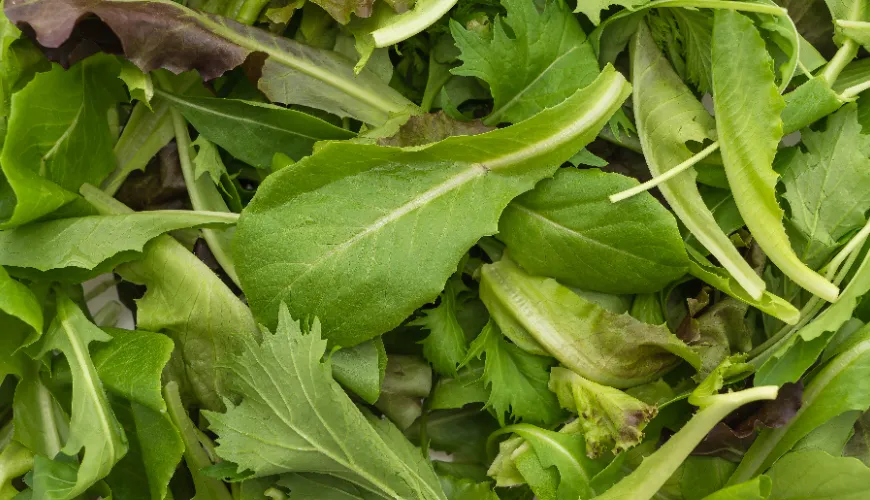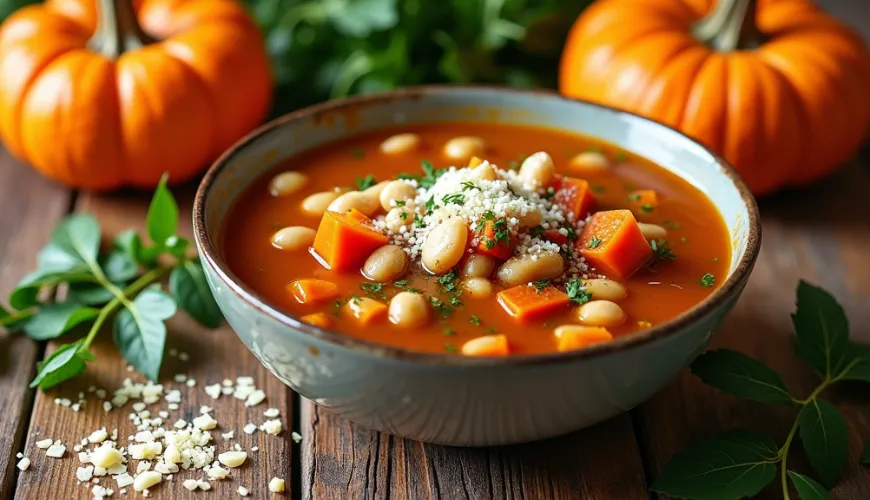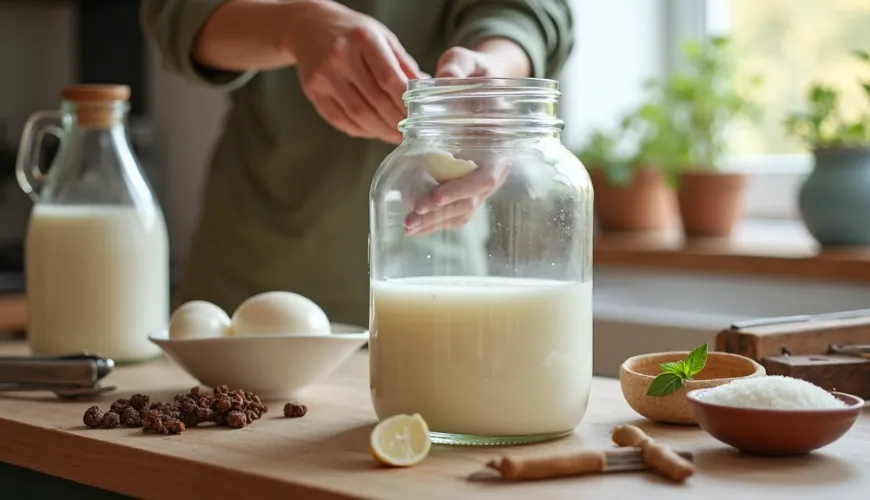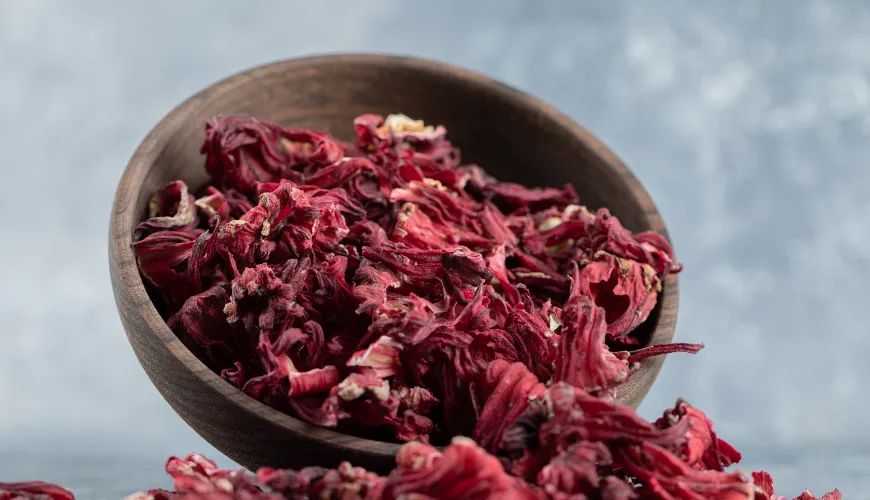
Minestrone recipe that will warm your heart and stomach

Minestrone – a colorful mosaic of flavors that soothes the stomach and soul
We often consider soups as a modest start to a meal or a quick choice when there's no time for something more complex. But in Italy, soup has a much deeper meaning. Especially when we talk about minestrone – a traditional vegetable soup with dozens of variations, but one soul. It's not just a warm bowl full of flavors; it's a story of simplicity, seasonality, and gratitude for nature's gifts. And indeed, a recipe for minestrone, in both its original and quick versions, deserves our attention.
What does "minestrone" actually mean?
The word minestrone comes from the Italian "minestra," which simply means soup. By adding the suffix "-one," the term gains emphasis, loosely translated as "a hearty soup." And that perfectly captures its essence. It's not a thin broth but a thick vegetable soup full of colors, textures, and aromas that can replace an entire course. Whether you prepare it in summer with fresh tomatoes and zucchini or in winter with root vegetables and cabbage, minestrone always adapts to the season, customs, and the chef's current mood.
That's its beauty – there's no single "original minestrone recipe" that's universally valid. Every region in Italy, every grandmother, and every family has its own way of preparing it. Yet, there are certain elements that repeat and give the soup its characteristic flair.
Basic building blocks of minestrone soup
1. Vegetables: The heart of minestrone consists of fresh vegetables – typically onions, carrots, celery stalks, tomatoes, beans, zucchini, spinach, or cabbage. In winter months, pumpkin, potatoes, or Brussels sprouts are used.
2. Legumes and pasta: Suitable additions are beans – most often white, cannellini, or borlotti. Pasta or rice is often added to the soup, making it even more filling.
3. Broth or water: For flavor, a vegetable broth is ideal, but plain water can also be used. Many Italian chefs don't strictly follow rules and improvise even in this aspect.
4. Herbs and spices: The basic trio includes garlic, bay leaf, and thyme. Fresh basil and grated Parmesan are often added at the end.
One of the magical aspects of minestrone is that nothing is ever wasted. Leftover vegetables, spinach leaves, a piece of hard cheese – everything finds its place. This is a sustainable approach that is increasingly relevant today.
Quick minestrone? It's possible!
In today's fast-paced world, the term "quick minestrone" might seem somewhat paradoxical, but there are indeed ways to enjoy this delicacy without hours spent at the stove. If you use pre-cooked canned beans, frozen vegetables, and quality vegetable broth, you can have the soup ready in 30 minutes.
Simply sauté onions, garlic, carrots, and celery in olive oil, add the rest of the vegetables, pre-cooked beans, and pour in the broth. After ten minutes, add the pasta. After another ten minutes of cooking, it's done. Just drizzle with olive oil and sprinkle with Parmesan on the plate.
Although it might seem that this way, minestrone loses its original charm, it's not true. Even the quick version can retain the fullness of flavors and the ability to warm the body and heart – and that's ultimately the most important thing.
Minestrone in practice
Imagine a family with young children trying to eat healthily but doesn't have unlimited time for cooking. The mother prepares a large pot of minestrone for the weekend, using seasonal ingredients – perhaps with pumpkin, potatoes, cabbage, and white beans. She divides the soup into two parts: one the family enjoys immediately, the other is frozen. During the week, when there's no time for long cooking, the soup just needs to be reheated, pasta added, and in no time, a complete meal full of fiber, vitamins, and flavor is on the table.
Try our natural products
This approach is not only practical but also sustainable. It uses seasonal ingredients, reduces waste, and brings a sense of connection with nature back into the kitchen – a principle on which the philosophy of the Ferwer store is built.
How to make a traditional minestrone recipe
Although there are many variations, here is one of the proven recipes for Italian minestrone that can serve as a foundation:
Ingredients:
- 1 onion
- 2 cloves of garlic
- 2 carrots
- 2 celery stalks
- 1 zucchini
- 1 can of tomatoes (diced)
- 1 can of white beans
- 1 liter of vegetable broth
- 1 handful of pasta (e.g., small elbows)
- 2 handfuls of fresh spinach or cabbage
- olive oil, salt, pepper
- bay leaf, thyme, basil
- Parmesan for serving
Instructions:
- Briefly sauté onion and garlic in olive oil. Add diced carrots and celery and sauté for a while.
- Add zucchini, tomatoes, broth, and bay leaf. Cook for 10–15 minutes.
- Stir in beans and pasta and cook for another 10 minutes.
- Finally, add spinach, season with salt, pepper, and thyme.
- Serve with grated Parmesan and fresh basil.
This version is based on the classic but can be adapted according to what you have at home. If you don't have pasta, use rice. If you don't have spinach, add cabbage. And if you want to enhance the soup further, add a Parmesan rind to the pot – it will release flavor during cooking and beautifully soften the soup.
A soup that connects generations and continents
It's no coincidence that minestrone has become popular even outside Italy. Its natural diversity, nutritional value, and adaptability appeal to anyone looking for food that's more than just calories. Moreover, it easily adapts to vegetarian and vegan diets – without compromising on flavor.
"Minestrone is like life – it's never the same twice, but it always warms you," said Italian chef and food blogger Giallo Zafferano. And it's hard to disagree with that.
Unlike many modern dishes that come and go like fashion trends, minestrone remains. It's a dish rooted in tradition but open to new generations. And that's where its strength lies – the ability to be timeless, accessible, and genuine. Just as a sustainable household should be.
Whether you opt for the classic minestrone recipe or its quick variant, one thing is certain – with every spoonful, you feel a piece of Italy, home comfort, and a reminder that beauty lies in simplicity.







